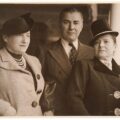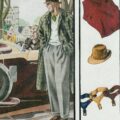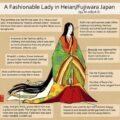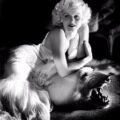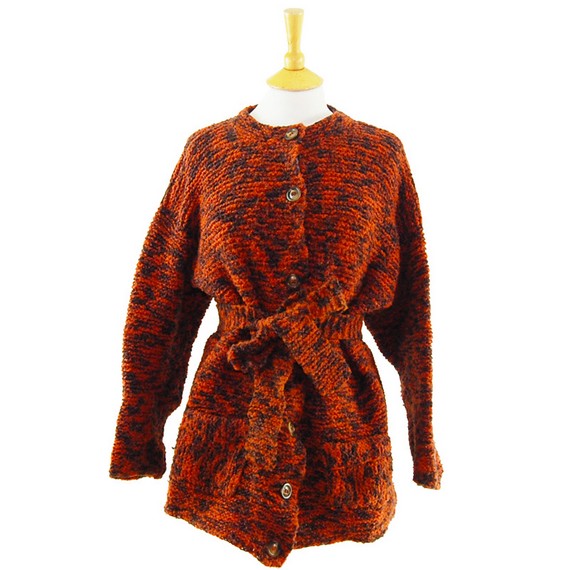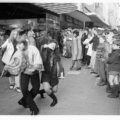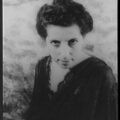The history of makeup Pt 2
April 13, 2016We left the story at the turn of the century, where Victoria didn’t approve of cosmetics and women pinched their cheeks and bit their lips to get a little colour. Now things are changing. In England we have a queen consort, Queen Alexandra, long married to the Prince of Wales who is now King Edward VII, since Queen Victoria died in 1901. Queen Alexandra was rather partial to her cosmetics, openly wearing powder and rouge and priding herself on her fine complexion. The history of makeup goes on…
The history of makeup
In 1906, Selfridges department store opened, looking just as grand as it does today and emphasising that everyone was welcome to come and browse, from waitresses to duchesses. This brash American-owned shop sold cosmetics over the counter without a hint of shame. This was a first. Not only were they not shy about selling it, women weren’t too shy to buy it right out in the open. Previously it arrived discreetly wrapped by mail order, like a sex toy.
Now I have a piece of conflicting information. I have a couple of sources that say in 1913 Suffragettes wore red lipstick as a sign of emancipation. I’m totally not buying this. Suffragettes were specifically instructed to look ladylike and respectable… and though powder and rouge had started to be worn more obviously, this was the no-make-up make up look. A slash of scarlet is another thing entirely, and didn’t signify feistiness but prostitution. I think that looking like the demi mondaine would really undermine the Suffragette’s arguments in this case. I could be wrong though, I just haven’t seen any direct evidence for it.
The history of makeup – the silent film era
Red lipstick definitely started to come in with the explosion in popularity of film. The first film was projected around 1891, but around 1914ish films were really coming into their own and some big stars from the stage were being lured over to the silver screen. Charlie Chaplin transferred from the vaudeville circuit to film in 1914, T
heda Bara’s first film was in 1914, and Clara Bow started in 1922. Theda Bara’s first massive hit was in Cleopatra in 1917. Of course, in it she is wearing heavy makeup, as actresses had always done. In the theatre they had to make sure that their faces were seen right from the back row, so her lipstick contrasted with her white face and dramatically made up eyes. Theda Bara almost always played a vamp, although she tried her best to get parts against that type.
The history of makeup – The She-Devil
A “Vamp” is a pretty naughty woman. It’s short for “Vampire”, a concept invented in 1897, when Bram Stoker’s Dracula was published, and Philip Burne-Jones painted The Vampire, an image of a pale, dark lidded woman sneering triumphantly above the body of a man. Then Rudyard Kipling wrote a poem on the subject as well.
Bara, too, had the pale face and black circled eyes, and even a small selection of her film titles is delicious: The Siren of Hell, The Devil’s Daughter, Sin, Destruction, The Serpent, Gold and the Woman, The Vixen, The Darling of Paris, The Tiger Woman, The Rose of Blood, The Forbidden Path, Salome, When a Woman Sins, The She-Devil, When Men Desire, A Woman There Was, The Lure of Ambition, The Unchastened Woman, and Madame Mystery give you an idea of her somewhat limited range.
The history of makeup – The It Girl
So, if you wanted to be seen as a Siren From Hell, you’d be sure to put on a lot of kohl, darken your eyebrows and add a slick of lipstick before leaving the house. If, however, you wanted to be a more innocent woman, more cheeky than naughty, you’d go with the flapper look. Clara Bow most famously epitomised this, with her 1927 movie It (which gave rise to the phrase “It Girl”). For an It Girl look, you put on (slightly less) kohl, some red lipstick and drew on some jaunty eyebrows.
They didn’t often have makeup artists for films then and theatrical actresses had always done thier own faces. But Clara Bow had entered the profession through a magazine competition. There is a story that when she tried to make herself up for her first film she was at a loss as to how to proceed. The other actresses refused to help and when she came on set the director asked why she was done up as a clown. She must have improved in short order though, as she influenced the look of thousands of young women.
The history of makeup – the movie makeup guru
But there were some dedicated makeup artists, and many who started this way ended up being household names in the cosmetics industry. George Westmore was one of the first. He was a hairdresser who loved going to the movies. However it jarred him to see how rubbish the wigs and makeup were, because they were still designed for theatre, which meant they were unsubtle. The makeup also had no continuity, varying from scene to scene.
He started practicing make up on prostitutes, because they already wore it and didn’t mind him trying out his techniques on them. He found himself painting nipples, hip bones and nice rosy bottoms and well as faces. The wigs, he didn’t have to practice as he was already a master. He scored a job at a Hollywood studio, convincing them to set up a makeup studio, and then went on to sell his makeup to the public.
Then there was Max Factor. Born Maksymilan Faktorowicz in Poland, his name was changed by US officials when he immigrated to America after a colourful history as court cosmeticist to the Czar in Russia. His main role in Hollywood was in delevoping makeup to create more wearable formulas from the stiff stage makeup that tended to crack. He, too, founded an empire. Other entrepreneurs were not far behind.
The history of makeup – Red, white and black
Other than makeup itself, the other sudden and strange look for fashionable women in the 1920s was tanned skin. Coco Chanel, the style leader, liked hanging around on yachts catching the sun, so bronzed skin, and therefore bronzer and tanning oil were invented.
But apart from that, makeup colours didn’t change much in the years between 1920 and 1950. It was as pale a face as possible, a smudge of blush, a defined, arched brow, and for the eyes mascara with either neutral or grey eyeshadow topped with eyeliner, or eyeliner alone. Above all, a red lip was important. For your makeup routine, you could skip the rest and just go out with a dab of powder and your red lips.
And there wasn’t just one red lip either. Max Factor makeup promoted the idea from its inception that there was a red for everyone – a different shade for blondes, brunettes, brownettes (dark blondes) and redheads. Elizabeth Arden countered that your makeup colour depended on your personal style.
Although the colours may have been similar for 30 years, the way they were worn changed. Even a simple thing like eyeliner evolved – smudgy, precise, top and bottom or top only, finishing strictly at the corner of the eye or extending beyond. Similarly with brow fashion, which changed shape and width regularly.
Makeup technology
The history of makeup technology was ever changing too. Whereas eyeliner and mascara had originally been made at home from lamp black or charcoal, by the 1920s new makeup companies were producing cake mascara that you spat on to lubricate, complete with little brushes.
Rouge pots became compact and portable, and available in a sophisticated range of shades. Lipstick formulas improved to become longer lasting and more comfortable. And powder, which had been acceptable for the longest amount of time, was produced in many different kinds of little decorative compact, from the whimsical to the luxurious – a little accessory that added a touch of glamour to your life while you added powder to your nose.
The importance of lipstick
Although it had been taken up by fashionable younger women by the 1920s, obvious makeup like lipstick took time to become respectable for society as a whole. It was established by the 1930s, but the war in 1939 placed severe restrictions on it particularly in Britain where the efforts of chemical companies were more directed at medicinal products.
However, it had by then become an indispensable symbol of staying cheerful and looking your best despite adversity. Lipstick was precious, in more ways than one – this is from the diary of Lieutenant Colonel Mervin Willett Gonin DSO who was among the first British soldiers to liberate Bergen-Belsen concentration camp in 1945:
”It was shortly after the British Red Cross arrived, though it may have no connection, that a very large quantity of lipstick arrived. This was not at all what we men wanted, we were screaming for hundreds and thousands of other things and I don’t know who asked for lipstick. I wish so much that I could discover who did it, it was the action of genius, sheer unadulterated brilliance. I believe nothing did more for those internees than the lipstick. Women lay in bed with no sheets and no nightie but with scarlet red lips, you saw them wandering about with nothing but a blanket over their shoulders, but with scarlet red lips. I saw a woman dead on the post mortem table and clutched in her hand was a piece of lipstick. At last someone had done something to make them individuals again, they were someone, no longer merely the number tattooed on the arm. At last they could take an interest in their appearance. That lipstick started to give them back their humanity.”
Max Factor Reds
1930s mascara
1940s lipsticks.
Theda Bara in Carmen 1915
A (bad) postcard reproduction of The Vampire by Philip Burne Jones along with Rudyard Kipling’s poem.
George Westmore
Max Factor
A new kind of lipstick.
Dorin of Paris makeup ad
Compacts of Character in the 1950s.




